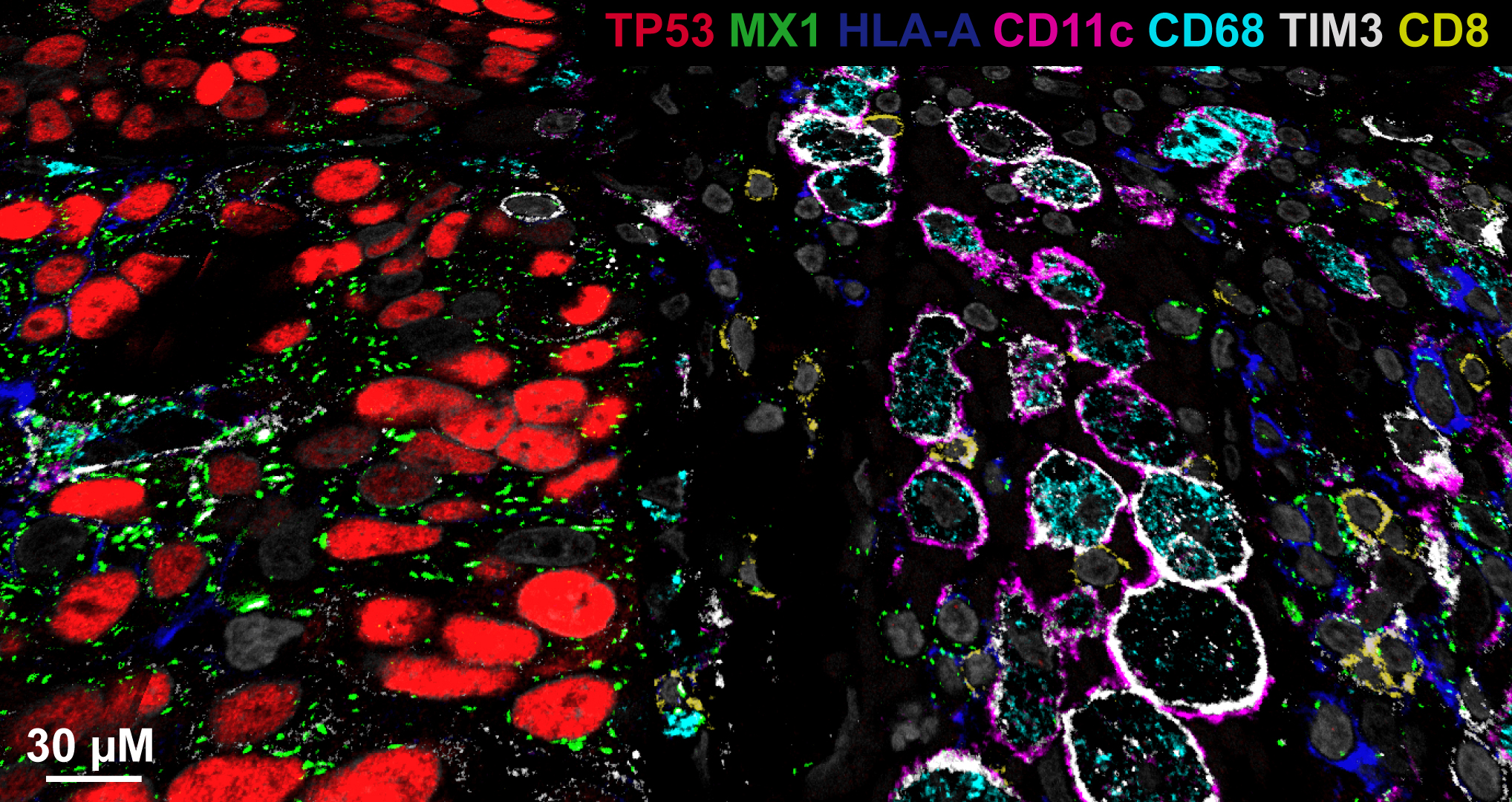




The molecular changes that occur as precancerous lesions progress to high-grade serous ovarian cancer (HGSOC) are not well characterized. With an overall 5-year survival rate of just 30%, the cancer originates in the fallopian tubes (not the ovaries) and has two recognized precursor lesions: p53 signatures (benign-looking secretory cells that sport mutations in the tumor suppressor TP53) and serous tubal intraepithelial carcinomas (STIC). Looking for features that might help catch HGSOC early, researchers led by Ludwig Harvard’s Sandro Santagata, Peter Sorger, Tanjina Kader, Jia-Ren Lin and Clemens Hug integrated a high-plex imaging platform, CyCIF, and spatial transcriptomics to analyze human samples from progressive stages of HGSOC development, including p53 signatures, STICs and invasive disease. They described in an online publication in Cancer Discovery in December some common features of precursor epithelial cells, including persistent interferon (IFN) signaling, chromosomal instability and aberrant innate and adaptive immunity. STIC epithelium had relatively high expression of MHC-I molecules and IFN-stimulated genes that are common features of late-stage tumorigenesis. These alterations coincide with progressive shifts in the tumor microenvironment, transitioning from immune surveillance in early STICs to immune suppression in advanced STICs and cancer. Their findings identify molecular markers that could be useful for HGSOC diagnostics and provide clues for developing therapies to treat earlier and more medically tractable stages of HGSOC progression. The data is available for public exploration in cBioPortal.
Multimodal Spatial Profiling Reveals Immune Suppression and Microenvironment Remodeling in Fallopian Tube Precursors to High-Grade Serous Ovarian Carcinoma
Cancer Discovery, 2024 December 20
